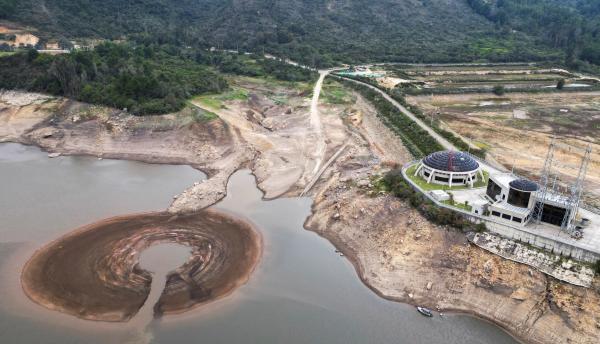Water shortages in Bogota prompt rationing
2 May 2024 by The Water Diplomat

The Colombian city of Bogota is currently facing critical water shortages, with the San Rafael reservoir that supplies 70% of the water of the city having dropped to 19% of its supply capacity. On the 15th of April, the city’s mayor Carlos Fernando Galán announced measures to reduce water consumption, whereby nine zones in the city would take turns to be cut off from water for 24 hours. A surcharge has also been imposed on households consuming more than 22 m³ per month, and fines of up to U.S. $ 300 can be imposed on individuals deemed to be wasting water, such as by washing cars. The rationing system has begun to take effect as water consumption in the city dropped from 17.8m³/second to 16.01m³/second, but the mayor has stated that water consumption should drop to less that 15m³/second for the reservoirs to be able to recover.
Colombia is currently experiencing an intense drought: in January the government declared a national disaster, valid for a period of 12 months, due to the impact of the "El Niño" phenomenon. Subnational governments and members of the National Disaster Risk Management System were asked to prepare for excess precipitation - or deficit - depending on the location.
The city of Bogota lies at an altitude of 2,600 m and is located along the Bogota River in the Andes Mountain range. The city sources its water from the surrounding mountain ranges where there is a combination of ecosystems: glaciers, which collect water in the form of snow and ice, paramo ecosystems which lie above the tree line and below the snow line and act as sponges, capturing the high levels of precipitation prevalent in the mountains, and forest ecosystems.
The city has faced a mismatch between water supply and demand throughout the twentieth century and has each time responded with the construction of reservoirs, of which the first was the la Regadera dam, which was inaugurated in 1938. Later dams were built such as the Chisacá dam, completed in 1951 and soon to be followed by the Neusa and Sisga reservoirs built to the north of Bogota and the Aqueduct of the Bogotá River. By 2022, Bogota accounted for 94% of the water extracted from the Bogota River for urban purposes. Currently, 65% of the water used in Bogota is sourced from the Guatiquia river basin, where the Chingiza dam is located inside a protected national park, and water is transferred from the Chingaza dam to the San Rafael dam near Bogota through a transfer tunnel. In 2022, annual water demand in the city was 1828 million m³ against an available supply of 1458m³, leading researchers to conclude that the risk of water scarcity was very high.
